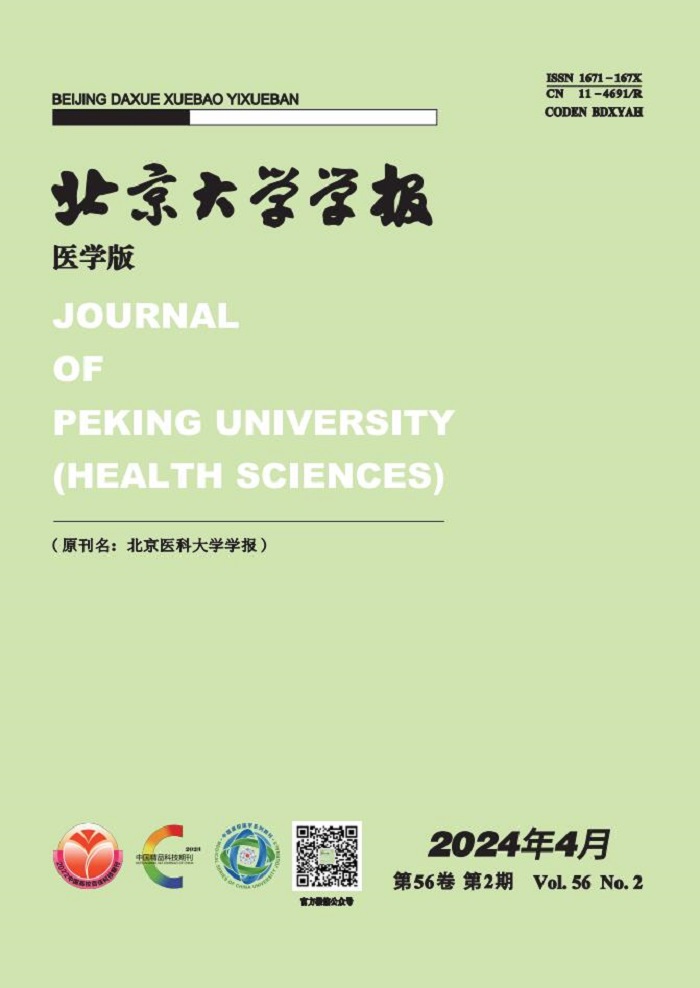Objective: To investigate the clinical characteristics and risk factor analysis of necrotizing pneumonia in children. Methods: A retrospective study was used to analyze the case data of 218 children with severe pneumonia hospitalized in the Department of Respiratory Medicine, Children's Hospital of Capital Institute of Pediatrics from January 2016 to January 2020, and they were divided into 96 cases in the necrotizing pneumonia group (NP group) and 122 cases in the non-necrotizing pneumonia group (NNP group) according to whether necrosis of the lung occurred. The differences in clinical characteristics (malnutrition, fever duration, hospitalization time, imaging performance, treatment and regression follow-up), laboratory tests [leukocytes, neutrophil ratio, platelet (PLT), C-reactive protein (CRP), procalcitonin (PCT), D-dimer, and lactate dehydrogenase (LDH)] and bronchoscopic performance between the two groups were compared, and Logistic regression analysis of clinical risk factors associated with necrotizing pneumonia was performed to further determine the maximum diagnostic value of each index by subject operating characteristic curve (ROC). The critical value of each index was further determined by the ROC. Results: The differences in age, gender, pathogenic classification, and bronchoscopic presentation between the two groups of children were not statistically significant (P>0.05); whereas the imaging uptake time of the children in the NP group was higher than that in the NNP group (P < 0.05). The differences in malnutrition, fever duration, length of stay, white blood cell count, neutrophil ratio, CRP, PCT, and D-dimer were statistically significant between the two groups (P < 0.05). The imaging uptake time was lower in children under 6 years of age than in those over 6 years of age, and the imaging uptake time for bronchoalveolar lavage within 10 d of disease duration was lower than that for those over 10 d; the imaging uptake time was significantly longer in the mixed infection group than that in the single pathogen infection group. Logistic regression analysis of the two groups revealed that the duration of fever, hospital stay, CRP, PCT, and D-dimer were risk factors for secondary pulmonary necrosis (P < 0.001, P < 0.001, P < 0.001, P=0.013, P=0.001, respectively). The ROC curves for fever duration, CRP, PCT, and D-dimer were plotted and found to have diagnostic value for predicting the occurrence of pulmonary necrosis when fever duration >11.5 d, CRP >48.35 mg/L, and D-dimer > 4.25 mg/L [area under ROC curve (AUC)=0.909, 0.836, and 0.747, all P < 0.001]. Conclusion: Children with necrotizing pneumonia have a longer heat course and hospital stay, and the imaging uptake time of mixed pathogenic infections is significantly longer than that of single pathogenic infections. Children with necrotizing pneumonia under 6 years of age have more advantageous efficacy of electronic bronchoscopic alveolar lavage within 10 d of disease duration compared with children in the group over 6 years of age and children in the group with disease duration >10 d. Inflammatory indexes CRP, PCT, and D-dimer are significantly higher. The heat course, CRP, PCT, and D-dimer are risk factors for secondary lung necrosis in severe pneumonia. Heat course >11.5 d, CRP >48.35 mg/L, and D-dimer >4.25 mg/L have high predictive value for the diagnosis of necrotizing pneumonia.




